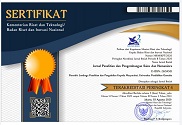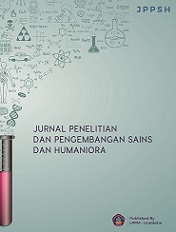Language Variation in Indonesian Movie “Imperfect”
DOI:
https://doi.org/10.23887/jppsh.v6i1.43581Keywords:
sociolinguistics, language variation, Imperfect movieAbstract
Dialek sering dilihat sebagai penyimpangan dari norma (biasanya salah), sebagai penyimpangan dari bentuk bahasa yang benar atau standar. Kebanyakan pembicara dapat menyebutkan semua yang mereka katakana. Penelitian ini bertujuan untuk menganalisis teori sosiolinguistik tentang variasi bahasa dan mengetahui variasi bahasa yang digunakan dalam film Imperfect. Selain itu, penelitian ini juga digunakan untuk menganalisis bagaimana penggunaan variasi bahasa dalam film tersebut. Desain penelitian ini adalah deskriptif kualitatif. Pengumpulan data menggunakan metode data kepustakaan. teknik pengumpulan data penulis dilakukan melalui dua metode, yaitu observasi dan dokumentasi. Teknik yang digunakan untuk mengumpulkan data adalah analisis deskriptif kualitatif. Hasil penelitian menunjukkan bahwa variasi bahasa yang digunakan dalam film sangat beragam, ada jargon, slang, argot, dan idiom. Dalam film tersebut ditemukan bahwa persentase penggunaan bahasa gaul adalah 45%, diikuti oleh argot 40%, dan yang terakhir adalah jargon dan idiom 10%. Kisah film ini disajikan dengan sangat baik dengan kolaborasi romantis dan komedi. Pesan moral yang didapat juga sangat dalam, yaitu pantang menyerah atas perkataan orang lain.
References
Afshunpour, N., & Memari, M. (2014). Interlingual Transfer of Idioms by Persian Learners in EFL Sentence Writing. Procedia - Social and Behavioral Sciences, 98. https://doi.org/10.1016/j.sbspro.2014.03.387.
Alqahtani, M. (2015). The importance of vocabulary in language learning and how to be taught. International Journal of Teaching and Education, III(3), 21–34. https://doi.org/10.20472/TE.2015.3.3.002.
Brown, G., & Hellmuth, S. (2022). Computational modelling of segmental and prosodic levels of analysis for capturing variation across Arabic dialects. Speech Communication. https://doi.org/10.1016/j.specom.2022.05.003.
Cao, Y. K., & Wei, W. (2019). Willingness to communicate from an English as an International Language (EIL) perspective: The case of Macau. System, 87. https://doi.org/10.1016/j.system.2019.102149.
Dippold, D., Lynden, J., Shrubsall, R., & Ingram, R. (2020). A turn to language: How interactional sociolinguistics informs the redesign of prompt:response chatbot turns. Discourse, Context & Media, 37. https://doi.org/10.1016/j.dcm.2020.100432.
Effendy, M. H. (2017). Interferensi Gramatikal Bahasa Madura Ke Dalam Bahasa Indonesia. Dialektika: Jurnal Bahasa, Sastra, Dan Pendidikan Bahasa Dan Sastra Indonesia, 4(1). https://doi.org/10.15408/dialektika.v4i1.6997.
Eiswirth, M. E. (2020). Increasing interactional accountability in the quantitative analysis of sociolinguistic variation. Journal of Pragmatics, 170. https://doi.org/10.1016/j.pragma.2020.08.018.
Galván, B. E. (2015). “Trapicheando” on Baltimore’s Corners A Semantic Analysis of The Wire’s Slang Terminology and its Translation. Procedia - Social and Behavioral Sciences, 212. https://doi.org/10.1016/j.sbspro.2015.11.336.
Hu, H., Yu, G., Xiong, X., Guo, L., & Huang, J. (2022). Cultural Diversity and Innovation: An Empirical Study from Dialect. Technology in Society, 69. https://doi.org/10.1016/j.techsoc.2022.101939.
Isiaka, A. L. (2021). Accommodation in L2 English: Measuring dialect convergence in Nigerian Englishes. Language & Communication, 79. https://doi.org/10.1016/j.langcom.2021.03.002
Lee, S., & Cho, M.-H. (2020). The impact of L2-learning experience and target dialect on predicting English vowel identification using Korean vowel categories. Journal of Phonetics, 82. https://doi.org/10.1016/j.wocn.2020.100983.
Leksono, M. L. (2019). Analisis Kesalahan Penggunaan Pedoman Ejaan Bahasa Indonesia (PUEBI) Pada Tugas Makalah dan Laporan Praktikum Mahasiswa IT Telkom Purwokerto. JP-BSI (Jurnal Pendidikan Bahasa Dan Sastra Indonesia), 4(2). https://doi.org/10.26737/jp-bsi.v4i2.1106.
Links, A. R., Callon, W., Wasserman, C., Walsh, J., Beach, M. C., & Boss, E. F. (2019). Surgeon use of medical jargon with parents in the outpatient setting. Patient Education and Counseling, 102. https://doi.org/10.1016/j.pec.2019.02.002.
Mahmoud, A. (2013). A linguistic perspective of the effect of English on MSA: Manifestations and ramifications. Journal of King Saud University - Languages and Translation, 25(1). https://doi.org/10.1016/j.jksult.2012.10.001.
Mansyur, U. (2018). Sikap Bahasa dan Pembelajaran Bahasa Indonesia di Perguruan Tinggi. GERAM, 7(2), 1–8. https://doi.org/10.31227/osf.io/te3df.
Maru, M. G., Pikirang, C. C., & Wuntu, C. (2021). Teachers ’ Perspectives of Autonomous Behavior in Language Learning : A Survey among English Teachers. Jurnal Bahasa Sastra Dan Pengajarannya Universitas; A Survey among English Teachers, 15(2). https://doi.org/10.31849/reila.v3i1.6064.
Masua, B., & Masasi, N. (2020). Enhancing text pre-processing for Swahili language: Datasets for common Swahili stop-words, slangs and typos with equivalent proper words. Data in Brief, 33. https://doi.org/10.1016/j.dib.2020.106517.
Matsumoto, K., Akita, K., Keranmu, X., Yoshida, M., & Kita, K. (2014). Extraction Japanese Slang from Weblog Data based on Script Type and Stroke Count. Procedia Computer Science, 35. https://doi.org/10.1016/j.procs.2014.08.127.
Melati, S. (2018). Perencanaan Bahasa Di Indonesia Dan Fungsinya Sebagai Pemersatu Keberagaman Bahasa. Jurnal Pendidikan Bahasa Dan Sastra Indonesia Metalingua, 3(2). https://doi.org/10.21107/metalingua.v3i2.7040.
Miralpeix, I., & Muñoz, C. (2018). Receptive vocabulary size and its relationship to EFL language skills. International Review of Applied Linguistics in Language Teaching, 56(1). https://doi.org/10.1515/iral-2017-0016.
Monbec, L. (2020). Systemic Functional Linguistics for the EGAP module: Revisiting the common core. Journal of English for Academic Purposes, 43. https://doi.org/10.1016/j.jeap.2019.100794.
Nasution;, Adryani, V., & Ayuningtias, N. (2020). The language choice of chinese community in medan: A sociolinguistics study. Journal of Applied Linguistics and Literature, 5(1), 11–25. https://doi.org/10.33369/joall.v5i1.9063.
Nguyen, X. N. C. M., & Walkinshaw, I. (2018). Autonomy in teaching practice: Insights from Vietnamese English language teachers trained in Inner-Circle countries. Teaching and Teacher Education, 69. https://doi.org/10.1016/j.tate.2017.08.015.
Patoko, N., & Yazdanifard, R. (2014). The Impact of Using Many Jargon Words, while Communicating with the Organization Employees. American Journal of Industrial and Business Management, 04(10), 567–572. https://doi.org/10.4236/ajibm.2014.410061.
Pilkington, E., Sage, K., Saddy, J. D., & Robson, H. (2019). What can repetition, reading and naming tell us about Jargon aphasia? Journal of Neurolinguistics, 49. https://doi.org/10.1016/j.jneuroling.2018.08.003.
Potvin, A. S., Boardman, A. G., & Stamatis, K. (2021). Consequential change: Teachers scale project-based learning in English language arts. Teaching and Teacher Education, 107. https://doi.org/10.1016/j.tate.2021.103469.
Preece, S. (2015). “They ain’t using slang”: Working class students from linguistic minority communities in higher education. Linguistics and Education, 31. https://doi.org/10.1016/j.linged.2014.10.003.
Procter, T., & Joshi, A. (2020). Cultural Competency in Voice Evaluation: Considerations of Normative Standards for Sociolinguistically Diverse Voices. Journal of Voice, 12. https://doi.org/10.1016/j.jvoice.2020.09.025.
Sari, H. I. (2016). Errors In Using English As Classroom Language Committed By The ICT Teacher of SMP Negeri 2 Semarang. EduLite: Journal of English Education, Literature and Culture, I(1), 41–56. https://doi.org/10.30659/e.1.1.41-56.
Schneider, S., Nebel, S., Pradel, S., & Rey, G. D. (2015). Introducing the familiarity mechanism: A unified explanatory approach for the personalization effect and the examination of youth slang in multimedia learning. Computers in Human Behavior, 43. https://doi.org/10.1016/j.chb.2014.10.052.
Schwarz, V. S., & Hamman-Ortiz, L. (2020). Systemic functional linguistics, teacher education, and writing outcomes for U.S. elementary English learners: A review of the literature. Journal of Second Language Writing, 49. https://doi.org/10.1016/j.jslw.2020.100727.
Sibuea, T. F. B. (2018). Students’ Perceptions on the Use of Google Classroom To Support Blended Learning for the Pengantar Linguistik Umum Course. Lingua : Jurnal Ilmiah, 14(2), 49–63. https://doi.org/10.35962/lingua.v14i2.45.
Solano-Flores, G. (2006). Language, dialect, and register: Sociolinguistics and the estimation of measurement error in the testing of English language learners. Teachers College Record, 108(11), 2354–2379. https://doi.org/10.1111/j.1467-9620.2006.00785.x.
Stuti, N. N. W., Ramendra, D. P., & Utami, I. A. M. I. (2018). The Jargons Used by Balinese Dancer of Female at Sanggar Seni Manik. Language and Education Journal Undiksha, 1(1). https://doi.org/10.23887/leju.v1i1.20251.
Sugiarti, S. (2011). Utilitas Bahasa Dalam Mengkonstruksi Hegemoni Kekuasaan Pada Novel Ronggeng Dukuh Paruk, Lintang Kemukus Dini Hari Dan Jantera Bianglala Karya Ahmad Tohari Dalam Perspektif Antropologi Linguistik. Kajian Linguistik Dan Sastra, 23(3). https://doi.org/10.23917/kls.v23i2.4313.
Sugiyono. (2017). Metode penelitian pendidikan pendekatan kuantitatif, kualitatif dan R&D. Bandung: Alfabeta.
Sultana, S. (2017). Analisis Bentuk Klitik Dalam Bahasa Sasak Dialek Meno-Mene. Lingua: Jurnal Bahasa, Sastra Dan Pengajarannya, 14(1). https://doi.org/10.30957/lingua.v14i1.241.
Winarni, R., Slamet, S. Y., & Syawaludin, A. (2021). Development of Indonesian language text books with multiculturalism and character education to improve traditional poetry writing skills. European Journal of Educational Research, 10(1). https://doi.org/10.12973/eu-jer.10.1.455.
Yunita, W., & Maisarah, I. (2020). Students ’ Perception On Learning Language At The Graduate Program OF English Education Amids The Covid 19 Pandemic. Linguists: Journal of Linguistics and Language Teaching, 2069(6), 107–120. https://doi.org/10.29300/ling.v6i2.3718.
Zaretsky, E. (2020). English spelling acquisition by English Language Learners from Spanish-speaking background: The role of cognitive and linguistic resources and L1 reading status. Cognitive Development, 55. https://doi.org/10.1016/j.cogdev.2020.100918.
Downloads
Published
Issue
Section
License
Copyright (c) 2022 Ni Kadek Noprianti, Prof. Dr. Ni Nyoman Padmadewi, M.A.

This work is licensed under a Creative Commons Attribution-ShareAlike 4.0 International License.
Authors who publish with the Jurnal Penelitian dan Pengembangan Sains dan Humaniora agree to the following terms:
- Authors retain copyright and grant the journal the right of first publication with the work simultaneously licensed under a Creative Commons Attribution License (CC BY-SA 4.0) that allows others to share the work with an acknowledgment of the work's authorship and initial publication in this journal.
- Authors are able to enter into separate, additional contractual arrangements for the non-exclusive distribution of the journal's published version of the work (e.g., post it to an institutional repository or publish it in a book), with an acknowledgment of its initial publication in this journal.
- Authors are permitted and encouraged to post their work online (e.g., in institutional repositories or on their website) prior to and during the submission process, as it can lead to productive exchanges, as well as earlier and greater citation of published work. (See The Effect of Open Access)









